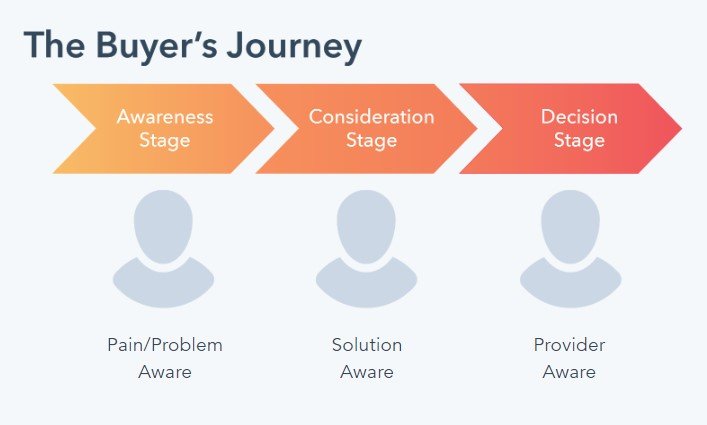What is content marketing?
A content marketing strategy involves the creation and sharing of online material (such as videos, blogs, ebooks, guides and social media posts) that is relevant, helpful, engaging and does not explicitly promote a brand but is intended to drive/aid interest in its products or services.
This content trickles down to all aspects of strategic marketing where it is promoted through SEO, PPC, Social Media, PR and inbound marketing.
How does a B2B content marketing strategy differ from a B2C content marketing strategy?
B2B content has to be useful and relevant. If the reader cannot apply your content to their work and business then it has missed the mark and will not aid you in being seen and known for your insights and resources.
That does not mean that B2C content does not have to be helpful and relevant, but it is not the number one priority of the content.
Getting started with B2B content marketing
Your audience
Knowing who your audience is, helps you ensure the content you are producing is relevant to them. You’ll need to identify what makes them tick and what problem you are helping them solve.
Your target audience should be built around your target personas - the ideal audience for the content and your business. Personas outline who they are, their roles, interests, challenges and where they consume content. HubSpot has a handy persona creation tool you should check out.
What content should you be creating?
Once you have identified who you are creating your content for, you will be able to develop targeted content that is relevant and helpful to them. Here is a great starting point for developing your content.
What problem are you helping to solve?
Identifying the problems and pains your target personas are experiencing will serve as the building blocks of your content. Create a content piece that directly addresses the problem, provides a broader understanding of it and offers a solution.
With content marketing, you are not directly pushing your service or product. You are providing resources for the audience to understand their problem and solutions they can use to solve the problem themselves. You can include your service should they want to get a professional in, but it should not be overwhelming.
What makes your content unique?
You are likely not the first in your industry to be writing about a particular problem, for your content to be found it should stand out from the rest. Look up the content created by your competitors and identify what further insight you can provide.
What have they missed out or what can you expand on? Your content should not just be another carbon copy cluttering search results.
What is the goal of your content?
Similarly to the problem you are solving, you should consider the ultimate goal this content will achieve for you and your audience. Does it touch on a smaller problem or dive into a much greater issue that your audience may not have even considered?
Are you leading them to a solution to the small or the larger problem? Identifying the impact the content will make can help you determine where you need to send your reader next.
Repurpose old content
If you are just starting out with content marketing, you don’t have to start from scratch and put together a mountain of content in a few days. Look back to the content you have created over the years and repurpose it.
Look into your website analytics and see which content is bringing in a constant stream of visitors to your website? Read through it again to determine what you can add to it. Has your view on the topic changed or is there more to the topic that you can add?
Don’t be afraid to republish od content, there may be a large group of people who have not read your article or their position has changed and they are now ready for it.
Supporting content
The best way to create more meaningful content is to think of your main topic or solution as a central pillar of your content building. The building can stand by itself but it will be much stronger and last a lot longer if it has supported content around that central pillar piece. Build a body of content for that problem.
Think of other content that is relevant to the main pillar. What other questions does your audience have around that idea? You can link in and out to all the other content around that central pillar through this supporting content. This strengthens your content in search engines and helps your audience find it.
Getting your content found
For your content to be found organically you will need to optimise your content for search engines. This process is referred to as SEO or search engine optimisation.
For search engines like Google to know what your content is about you will need to include the keywords associated with that content. For example, this article is about content marketing in a B2B space. The keywords associated would be B2B, content marketing, marketing and even inbound marketing. Including these keywords throughout the article lets search engines know that this article should be displayed for people searching using any of the above keywords.
Your content can also be found through paid ads like Google Ads or even Facebook Ads. If you don’t want to pay, share your content on your social media platforms, emails to your customers and prospects. These methods will help you reach highly targeted audiences outside of your current organic reach.
Where does your content fit in the buyer’s journey
It is important to identify where your content is placed within the buyer’s journey. Is it relevant for people in the awareness stage, where they are identifying what their problem is? Or does it fit in with audiences in the consideration phase where your audience is comparing multiple solutions and providers?

Identifying this stage is essential for the choice in call-to-actions you place within that content. Is that audience in need of further content in the form of a guide, or ready to chat to someone in your team about implementing your solution?
What format should you choose for your content?
Audiences consume content in many different ways so identifying which format is most relevant to your audience in your buyer personas is a must. This does not mean that you must stick to only one format. Test out content in multiple formats to see what resonates the most.
The same content can even be recreated in a different format to accommodate different audiences and improve your reach.
The different content formats you can make use of:
Video: You could make a whole video series or just a small video to be shared on social media.
Blog: The most common form is a blog or article. This can be in long and short form depending on your audience and the content itself.
Ebooks: This format is perfect for the on the go audience and those doing research on behalf of a decision-maker. This can also form a source of lead capture.
Infographics: If you have a lot of data or statistics to share, an infographic makes this information easier to understand and communicate.
Case Studies: This format is a great way to show off your business achievements and the impact you are making in your industry.
Final thoughts
Remember, the content you create is there to aid your audience through the buyer’s journey, not as a hard-sell tool that forces your products and services on them. If your content is relevant and helpful, they will come to you when they are ready.





